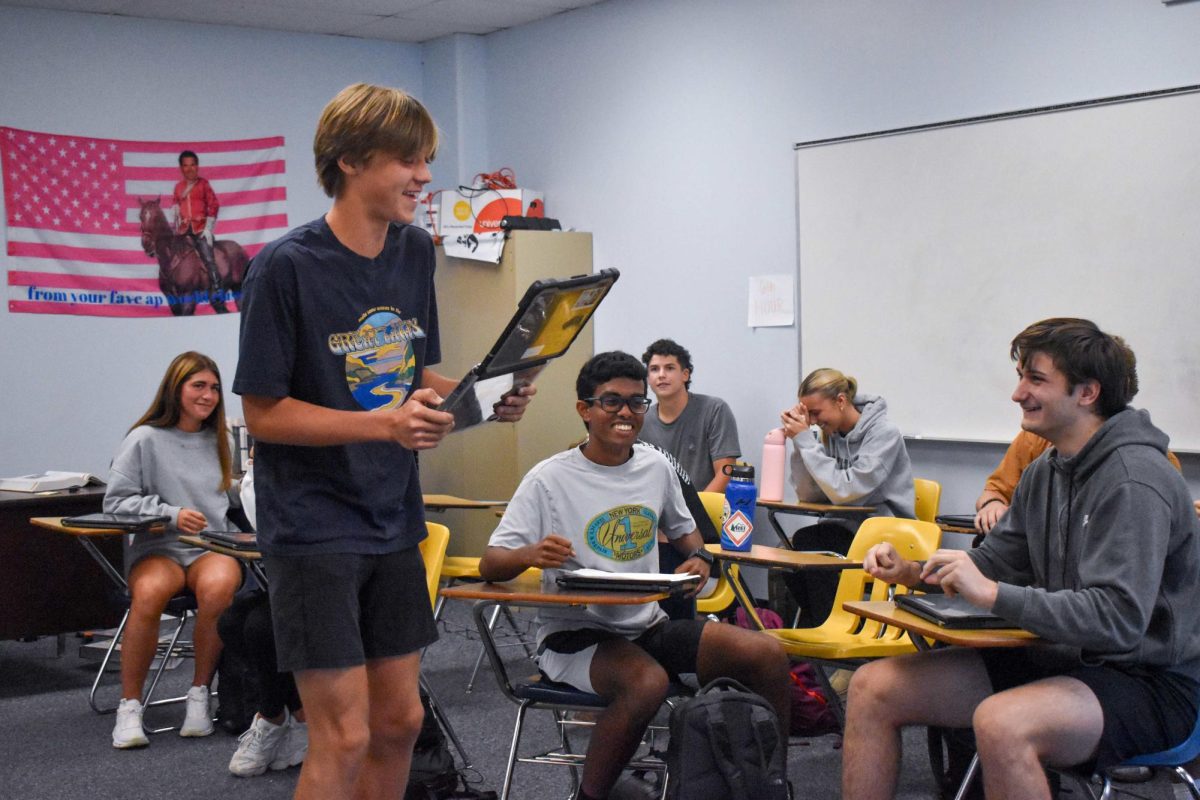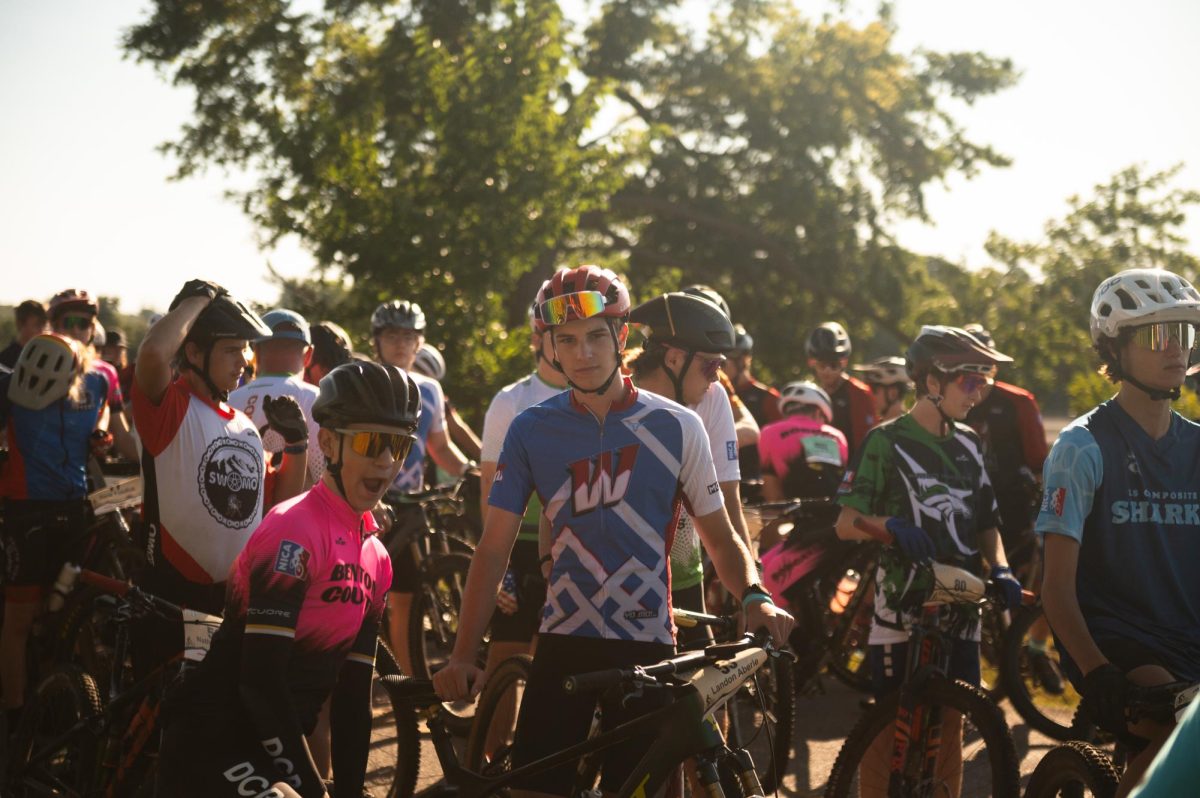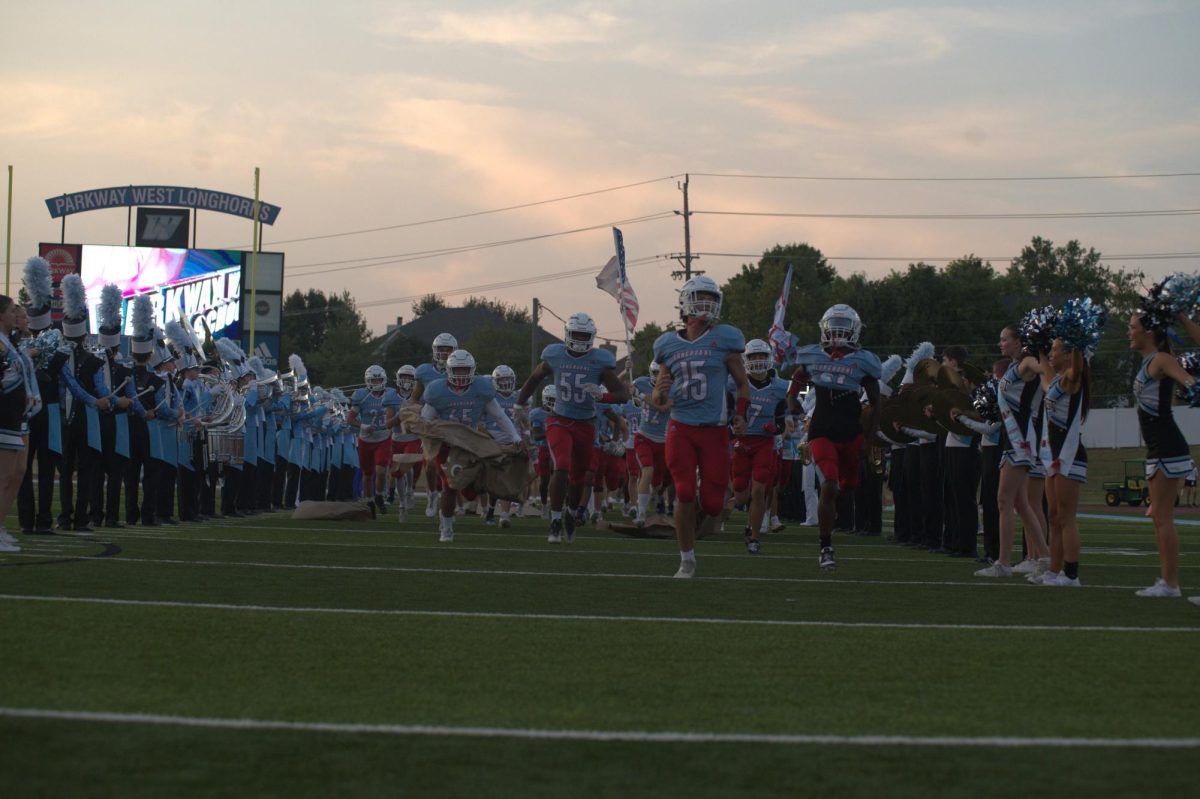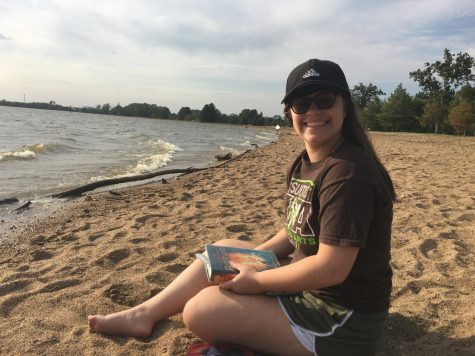On the night she was born, April 21, 2006, freshman Morrigan Dodd was transported to Children’s Hospital after doctors determined that Dodd was born without a connection between her heart and lungs. Soon after, she was diagnosed with Tetralogy of Fallot, a rare condition caused by a combination of four heart defects present at birth. Children born with Tetralogy of Fallot need corrective surgery in order to fix the deformities in the heart.
“I’ve never known a life without surgeries,” Dodd said. “They’ve just been in my normal life since the beginning. I’m resigned about that since there’s nothing I can do to prevent [having surgeries] There’s no use getting angry about it.”
Dee Dodd, Morrigan’s grandmother, who has been present for all of her surgeries, was one of the first people to be informed of her condition.¬Ý
‚Äú[When we learned of Morrigan‚Äôs condition,] I was scared to death and her mother was scared to death,‚Äù Dee said. ‚ÄúI mean really scared.‚Äù¬Ý
Morrigan had her first surgery when she was just two days old. To allow blood to flow to her lungs, she had a Blalock-Taussig shunt (BT shunt) inserted. A BT shunt is a small tube put into the heart in order to increase blood flow to the lungs usually used in small children as a temporary fix until the child is prepared for a more permanent solution.
“It was very nerve-wracking waiting [during the surgery],” Dee said. “We were just sitting there praying, hoping.”
Fourteen months after the BT shunt, when she was one, Morrigan had her second open heart surgery where her BT shunt was replaced with a cadaver‚Äôs heart valve. Every year since second grade Morrigan has had a cardiac catheterization to monitor the condition of her heart. Her latest surgery was last year, for another catheterization.¬Ý
‚ÄúAfter a while, it gets annoying that I have to go to the hospital every six months to even check if I need another surgery soon,‚Äù Morrigan said. ‚ÄúIt’s [really] annoying at any time, but you have to deal with it [to stay healthy.] I did feel isolated [because] I was out of school all the time, and my condition stopped me from doing a lot of things that [other] kids [enjoyed], like tag [and sports.]‚Äù
Because of her condition, Morrigan can not play competitive sports. As a child, she was not even allowed to run, in fear of overexerting and damaging her heart. Even now, she is unable to run for long distances because of her lack of endurance.¬Ý
‚ÄúI can’t just keep running, I have to [slow down and walk]. I couldn‚Äôt play as hard as other people,‚Äù Morrigan said. ‚ÄúI felt left out sometimes because I can‚Äôt do everything that everybody else can.‚Äù
During one of her surgeries, Morrigan’s vocal cords were damaged, which altered the way her voice sounds.
‚Äú[When I woke up] my voice sounded significantly different and it sounded gravelly. The doctors said that [my voice] would recover, but it never did. When I lost my voice, I thought I lost a part of myself. Now, I‚Äôm OK with it,‚Äù Morrigan said.¬Ý
To distract from her condition, Morrigan found comfort in art. Recently, she has also been working on videos for her YouTube channel.¬Ý
‚ÄúThe only place that [my condition] really affects me is running, or sports. I can still do things with my hand and draw,” Morrigan said. ‚ÄúThat makes me happy, [since] drawing is one of the ways I release my creativity.‚Äù
Morrigan has considered making a video about her experience with Tetralogy of Fallot as a way to reach out to kids with conditions like hers.
‚ÄúI know I‚Äôm not the only case. I could reach out to people and [tell them that] there are people who care about you. Even if it‚Äôs hard, you‚Äôre not alone,‚Äù she said.¬Ý
Morrigan has always been supported by her family, who are her drive to keep her heart healthy.¬Ý
‚ÄúNo matter how bad things could get, I still have my family with me and that drives me to keep fighting,‚Äù Morrigan said.¬Ý
Regardless of the obstacles she has faced, Morrigan also makes sure to keep a positive mindset regarding her condition.
¬Ý‚ÄúEven with [Tetralogy of Fallot] I can still do some things. I can still be happy,‚Äù she said. ‚ÄúYou just have to believe in yourself. If [your issue] affects one part [of your life], then do something else; something you can find happiness [in].‚Äù



![Freshman Morrigan Dodd pencils out a character in her sketchbook, which she regularly doodles in. In the last two years, Dodd has gone through three notebooks, filling up the pages with drawings of original characters. “[Drawing] is my safe space. It’s calming [for me],” Dodd said.](https://pwestpathfinder.com/wp-content/uploads/2021/02/20210205160443_IMG_0349-900x600.jpg)

![Freshman Daphne Stokes looks at a table with Veterans Day flyers and information on Nov. 11. Stokes, along with other West High students, like senior Alexander Lewinski, passed by the table in the cafeteria with army recruitment information and giveaways for students to observe during lunch. “Talking with [the recruiters] has definitely helped me [find] where I wanted to go, more than anything else,” Lewinski said.](https://pwestpathfinder.com/wp-content/uploads/2025/11/DSC_1227-2-1200x800.jpg)
![Helping a customer, print room assistant Gretchen Williams operates her booth at the West High Craft Fair from Oct. 25-26. This was Williams’ first time participating in the Craft Fair with her new craft shop, Gs Beaded Boutique. “People have always said, over the years, ‘you should open something.’ [I replied that] I would rather just make [my crafts as] gifts for people. I just started [the online store] up, and it's been okay. I'm always surprised [by] how many views I get and [the] people from different states buying things; somebody from Alaska bought something the other day.”](https://pwestpathfinder.com/wp-content/uploads/2025/11/DSC0451-2-1200x799.jpg)
![Gesturing toward the club’s name on the board, Global Youth Aid co-president year Daniah Alsagheer discusses upcoming service projects with members during a meeting on Oct. 30. “We might be one club at one school, but together, we’re [part of] something much bigger,” Alsagheer said.](https://pwestpathfinder.com/wp-content/uploads/2025/11/DSC00949-1200x800.jpg)
![Focused on providing exceptional service, sophomore Darsh Mahapatra carefully cleans the door of a customer’s car. Mahapatra has always believed his customers deserve nothing less than the best. “[If] they’re trusting us with their car and our service, then I am convinced that they deserve our 100 percent effort and beyond,” Mahapatra said.](https://pwestpathfinder.com/wp-content/uploads/2025/10/DSC_0018-1200x800.jpg)
![Sophomore Aleix Pi de Cabanyes Navarro (left) finishes up a soccer game while junior Ava Muench (right) warms up for cross country practice. The two came to Parkway West High School as exchange students for the 2025-2026 school year. “The goal for the [exchange] program is to provide opportunities for both Parkway students and our international exchange students to learn about other cultures, build connections and become confident, capable, curious and caring — Parkway’s Four C’s — in the process,” Exchange Program Lead Lauren Farrelly said.](https://pwestpathfinder.com/wp-content/uploads/2025/10/Feature-Photo-1200x800.png)

![Gazing across the stage, sophomore Alexis Monteleone performs in the school theater. The Monteleone family’s band “Monte and the Machine” has been releasing music since 2012, but Alexis started her own solo career in 2024 with the release of her first single, Crying Skies. “My whole family is very musical, [and I especially] love writing [songs with them],” Monteleone said.](https://pwestpathfinder.com/wp-content/uploads/2025/09/DSC7463-1200x798.jpg)
![Amid teaching a lesson to her AP Calculus BC class, Kristin Judd jokes alongside her students in their funny remarks. Judd has always enjoyed keeping the mood light in her classroom, along with on the volleyball court. “[I enjoy] that side talk where you see [or] overhear a conversation and chime in, or somebody says something funny,” Judd said.](https://pwestpathfinder.com/wp-content/uploads/2025/09/image-1200x730.jpg)
![Eyeing the ball, junior Ella McNeal poses for her commitment pictures at Clemson University. McNeal’s commitment comes after months of contact with top Division 1 soccer programs. “ It has taken a lot to get to where I am, but I know that [what] I've already been through is just the beginning, and I can't wait for what is to come,” McNeal said.](https://pwestpathfinder.com/wp-content/uploads/2025/09/IMG_4926-1200x900.jpeg)

![Sophomore Shree Sikkal Kumar serves the ball across the court in a match against Lindbergh. Sikkal Kumar has been a varsity member of the varsity girls’ tennis team for two years, helping her earn the number two rank in Class 2 District 2.“When matches are close, it’s easy to get nervous, but I [ground] myself by[staying] confident and ready to play,” Sikkal Kumar said.](https://pwestpathfinder.com/wp-content/uploads/2025/11/DSC2801-1200x798.jpg)
![Dressed up as the varsity girls’ tennis coach Katelyn Arenos, senior Kate Johnson and junior Mireya David hand out candy at West High’s annual trunk or treat event. This year, the trunk or treat was moved inside as a result of adverse weather. “As a senior, I care less about Halloween now. Teachers will bring their kids and families [to West’s Trunk or Treat], but there were fewer [this year] because they just thought it was canceled [due to the] rain. [With] Halloween, I think you care less the older you get,” Johnson said.](https://pwestpathfinder.com/wp-content/uploads/2025/10/DSC00892-1-1200x800.jpg)
![Leaning on the podium, superintendent Melissa Schneider speaks to Parkway journalism students during a press conference. Schneider joined Parkway in July after working in the Thompson School District in Colorado. “My plan [to bond with students] is to get things on my calendar as much as possible. For example, being in [classes] is very special to me. I am trying to be opportunistic [meeting] kids [and] being in [the school] buildings. I have all the sports schedules and the fine arts schedules on my calendar, so that when I'm available, I can get to them,” Schneider said.](https://pwestpathfinder.com/wp-content/uploads/2025/09/IMG_5425-1200x943.jpeg)

![Leaping through the air, senior Tyler Watts celebrates his first goal of the season, which put the Longhorns up 1-0 against the Lafayette Lancers. Watts decided to play soccer for West for his last year of high school and secured a spot on the varsity roster. “[Playing soccer for West] is something I had always dreamed of, but hadn’t really had a good opportunity to do until now. It’s [really] fun being out [on the field], and I’m glad I decided to join the team. It’s just all about having fun with the boys and enjoying what time we have left together,” Watts said.](https://pwestpathfinder.com/wp-content/uploads/2025/09/DSC_1951-1200x855.jpg)

![Shifting global trade, President Donald Trump’s tariffs are raising concerns about economic stability for the U.S. and other countries alike. “[The tariffs are] going to pose a distinct challenge to the U.S. economy and a challenge to the global economy on the whole because it's going to greatly upset who trades with who and where resources and products are going to come from,” social studies teacher Melvin Trotier said.](https://pwestpathfinder.com/wp-content/uploads/2025/05/MDB_3456-1200x800.jpg)

![Pitching the ball on Apr. 14, senior Henry Wild and his team play against Belleville East. Wild was named scholar athlete of the year by St. Louis Post-Dispatch after maintaining a high cumulative GPA and staying involved with athletics for all of high school. “It’s an amazing honor. I feel very blessed to have the opportunity to represent my school [and] what [it] stands for,” Wild said.](https://pwestpathfinder.com/wp-content/uploads/2025/05/unnamed-6-1200x714.jpg)

Oladys Alvarez Leon • Mar 2, 2021 at 8:00 pm
Quiero significar lo positivo de motivar, de brindar estas oportunidades a los estudiantes, al impulsar a los jovenes a desarrollar sus capacidades, felicito a los profesores y a la institucion. El trabajo aborda un tema de alta sensibilidad y lo hace con claridad y con etica, resalta el coraje de Morrigan y de su familia con su apoyo y mucho amor. Para finalizar señalo que soy profesora y disfruto cuando a los alumnos se les estimulan la creatividad y el respeto, deseo agregar que estoy muy orgullosa de Rachel, es mi nieta. Gracias.
Dee Dodd • Mar 1, 2021 at 2:58 pm
Rachel, I think you did a wonderful job in writing this. I know we gave you a lot of information and you did some research on your own. I just saw one place where you omitted a word. When you mentioned the part about 14 months after the BT Shunt, she had it replaced with a cadaver’s heart, you omitted ‘valve’ after heart. The only thing I did not mention to you was that Morrigan is the light of our lives (myself and my husband) and I thank God for her every day.
Debra Klevens • Mar 1, 2021 at 7:17 pm
Thank you for your feedback. I updated the omitted word.